As a business owner, you've likely spent countless hours crafting a website that captivates your audience and elevates your brand. But what happens when you have multiple brands under your umbrella?
How do you seamlessly feature all of your offerings while providing a cohesive user experience? The secret lies in mastering the art of managing a multi-brand website.
In this article, we'll guide you through the strategies and best practices to successfully navigate the challenges of multi-brand website management and take your online presence to new heights.
Key Takeaways
- Understand the unique challenges of managing a multi-brand website, including maintaining brand identity, handling complex navigation, and content management.
- Discover effective strategies for centralizing your multi-brand website management, streamlining operations, and ensuring consistent branding across all your brands.
- Learn how to use a headless content management system, develop a unified content strategy, and optimize SEO to enhance the user experience for each of your brands.
- Explore best practices for ensuring consistent branding and a seamless user experience across your multi-brand website.

What Is A Multi-Brand Website?
A multi-brand website is a powerful online platform that allows companies with multiple brands to showcase their diverse offerings under a single digital umbrella. Unlike a single-brand website, which focuses on promoting and selling products or services for just one brand, a multi-brand website is designed to highlight and manage several brands owned by the same company.
Effectively managing a multi-brand website requires a delicate balance of strategies to maintain the unique identity of each brand, while ensuring a consistent branding and user experience across the entire digital ecosystem. This is noteworthy as brand consistency can increase revenue by 10-20%.
This can be a complex challenge, but mastering it can lead to significant benefits for both the company and its customers.
Benefits of Managing Multi-Brand Websites
Implementing a multi-brand website strategy can provide numerous advantages for businesses. From centralized management to streamlined operations and consistent branding, a well-executed multi-brand approach offers a wealth of opportunities to drive growth, build brand loyalty, and enhance the overall customer experience.
1. Centralized Management
A multi-brand website strategy, especially when paired with a headless CMS, enables centralized management across all your brands, simplifying coordination for marketing, content creation, and operational tasks. By leveraging the flexibility of a headless CMS, brands can unify their tech stack, making it easier to roll out updates, maintain a consistent brand experience, and optimize resources without having to overhaul multiple platforms. This scalable, centralized approach not only boosts efficiency and decision-making but also positions your business for long-term growth and adaptability as you scale or introduce new brands.

2. Streamlined Operations
Consolidating your brands under a single multi-brand website can leverage shared infrastructure, technology, and resources, resulting in cost savings and enhanced operational efficiency.
This streamlined approach can free up resources that can be reinvested into other areas of your business, such as product development or customer service.
3. Consistent Branding Across Brands
A multi-brand website can help ensure that your brand's visual identity, messaging, and overall customer experience remain consistent across all your offerings. 70% of brand marketers list building brand awareness through consistent branding as their top goal.
This consistency can increase brand awareness, foster brand loyalty, and create a more cohesive and memorable customer journey, ultimately driving better business outcomes.
Key Challenges in Managing Multi-Brand Websites
While a multi-brand website strategy offers numerous advantages, it also presents several key challenges that companies must address. Maintaining the distinct identity and personality of each brand can be a significant hurdle, as the website must balance the need for consistent branding across the portfolio with the need to differentiate each brand.
Handling the complex navigation and menus required to showcase multiple brands in an intuitive way can also be a significant challenge. Visitors should be able to easily navigate between the different brands and find the products or information they're looking for with ease.
Lastly, managing the content across multiple brands, ensuring it is tailored and relevant to each brand's target audience, can be a significant undertaking and can be helped through a content ecosystem. Effectively overcoming these challenges is crucial for delivering a seamless and engaging user experience that strengthens brand awareness and loyalty.
1. Maintaining Brand Identity
Preserving the unique identity and personality of each brand within a multi-brand website can be a complex task. Companies must find a delicate balance between consistent branding across the portfolio and the need to differentiate each brand.
2. Handling Complex Navigation
Navigating a multi-brand website can be a daunting experience for users if not properly designed. Website users spend an average of 6.44 seconds focused on the main navigation menu.
Ensuring intuitive and user-friendly navigation is essential, allowing visitors to easily move between the different brands and access the information they require.
3. Managing Content Across Brands
Maintaining cohesive and relevant content across multiple brands is a significant challenge. Companies must develop a content strategy that caters to the unique needs and preferences of each brand's target audience while maintaining a sense of consistency and quality throughout the website.
Strategies for Effective Multi-Brand Website Management
Managing a multi-brand website can be a complex endeavor, but there are several key strategies that can help ensure its success. Using the right tools, aligning your content approach, and optimizing for search can effectively navigate the challenges of maintaining a cohesive digital presence across multiple brands.
Use a Headless CMS for Multi-Brand Management
Implementing a robust content management system is crucial for coordinating content, assets, and permissions across your brand portfolio. A centralized CMS allows you to:
- Streamline workflows and content updates
- Maintain brand consistency across properties
- Easily manage multiple sites from a single interface
Many CMS platforms offer multi-site capabilities specifically designed for managing multiple branded websites efficiently.
Develop a Unified Content Strategy
90% of marketers include content in their marketing strategies. A cohesive content strategy ensures a consistent user experience while allowing for brand-specific tailoring. This involves:
- Aligning overall messaging and value propositions
- Creating content guidelines and templates
- Coordinating content calendars and campaigns across brands
A unified approach reinforces connections between your brands while still allowing for individual brand voices.
Implement Consistent Design Elements
Using consistent visual elements helps reinforce relationships between brands and creates a seamless user experience. Key aspects include:
- Shared color palettes and typography
- Consistent layout structures and navigation
- Common UI components and interaction patterns
Visual consistency strengthens overall branding while allowing for brand-specific customization. Check out our newest eBook for the best web design inspo!
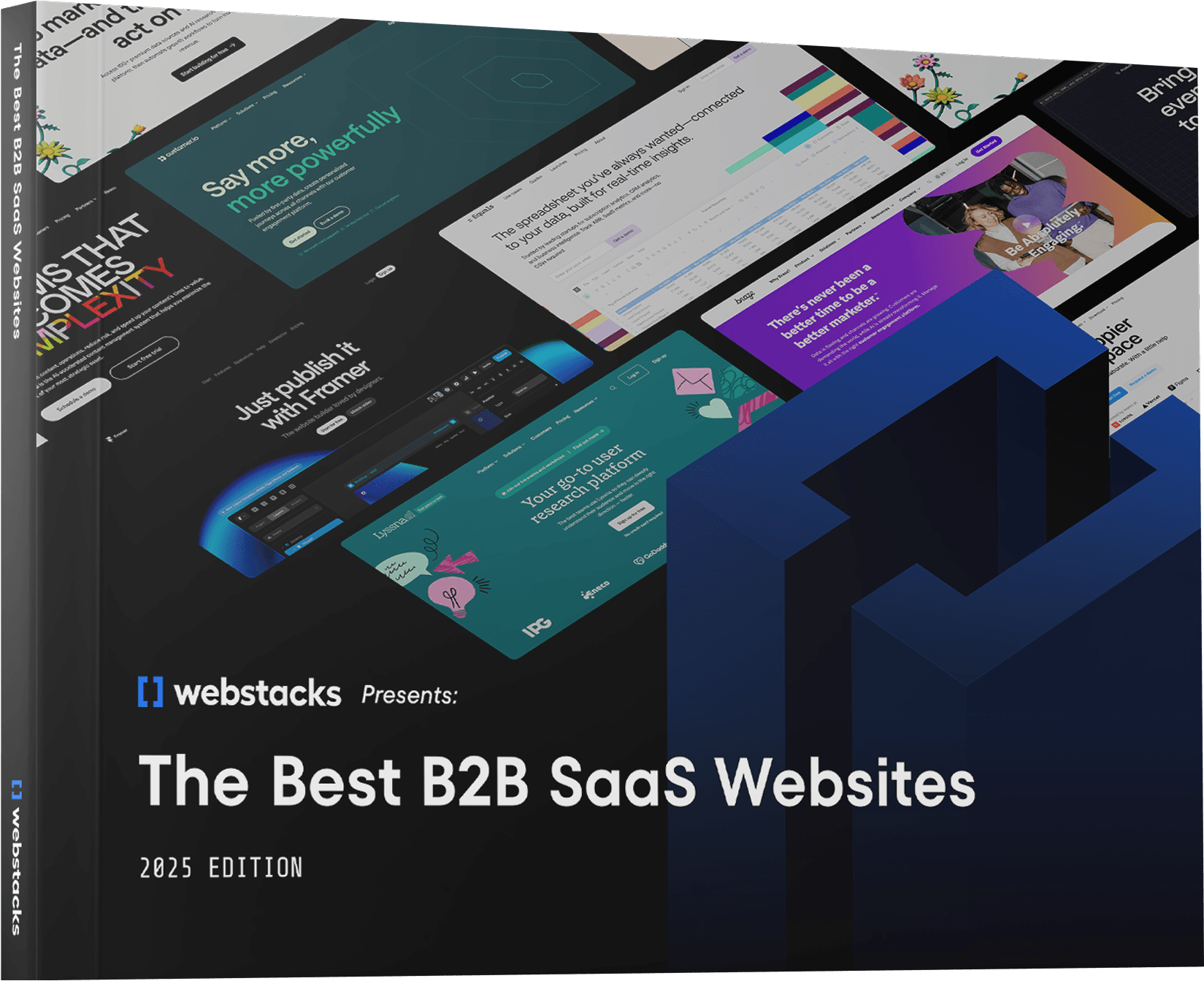
Optimize SEO for Each Brand
Ensuring strong search visibility for each brand is critical. Effective multi-brand SEO involves:
- Targeting brand-specific keywords
- Implementing structured data markup
- Building authoritative backlink profiles for each brand
- Coordinating internal linking between brand properties
Optimizing each brand individually while leveraging the collective authority of your brand portfolio can significantly boost overall search performance.
Ensuring Consistent Branding and User Experience
Managing a multi-brand website requires a meticulous approach to ensuring consistent branding and user experience across all the brands in your portfolio. This begins with establishing comprehensive brand guidelines that define the visual identity, tone of voice, and other key brand elements for each brand.
Create Brand Guidelines
Developing detailed brand guidelines is crucial for maintaining a cohesive brand identity on your multi-brand website. These guidelines should cover elements such as:
- Logo usage and placement
- Color palettes and typography
- Imagery and photography styles
- Tone of voice and messaging
- User interface design patterns
Clearly defining these brand-specific elements can ensure visual consistency and reinforce the unique identity of each brand within your multi-brand website.
Ensure Visual and Functional Consistency
Once your brand guidelines are in place, it's essential to implement them consistently across your multi-brand website. This means aligning the color schemes, typography, and overall aesthetic of each brand's pages to create a seamless user experience.
Additionally, you should strive for functional consistency in areas such as navigation, content structure, and user interactions, ensuring that customers can easily navigate and engage with each brand's offerings.
Personalize User Experience for Each Brand
Beyond visual and functional consistency, you can further enhance the user experience by personalizing the content, product recommendations, and calls to action for each brand.
Tailoring the user experience personalization to the unique needs and preferences of your target audiences can strengthen the connection between customers and each individual brand, fostering brand identity, brand awareness, and customer loyalty.
In fact, 75% of consumers are more likely to buy from a retailer that includes some sort of personalization in their user experience.
SEO Best Practices for Multi-Brand Websites
Optimizing the search engine optimization (SEO) performance of a multi-brand website is crucial for driving visibility and traffic to the individual brands. This involves a multifaceted approach that encompasses keyword optimization, content optimization, structured data implementation, and strategic link building.
Optimize Each Brand's Keywords and Content
Begin by conducting thorough keyword research to uncover the unique search terms and phrases associated with each brand in your portfolio.
Tailor the content on each brand's website to align with these target keywords, ensuring that it resonates with the specific needs and search intent of your audience.
Regular content optimization can help maintain relevance and improve the overall search engine visibility of your multi-brand online presence.
Use Structured Data and Schema Markup
Implementing structured data and schema markup on your multi-brand website can significantly enhance the way search engines interpret and display your content in the search engine results pages (SERPs).
Providing clear, machine-readable information about the relationships between your different brands can help search engines better understand the structure of your website and showcase relevant details that can increase click-through rates and engagement.
Implement Effective Link Building Strategies
- Links are one of the top two criteria considered in Google's page ranking algorithm. Cross-promote your brands through internal linking.
- Conduct outreach to industry-relevant websites and influencers, securing high-quality backlinks that can boost the overall authority and credibility of your multi-brand online presence.
- Use guest posting opportunities to showcase your expertise and drive referral traffic to your individual brand websites.
Embracing these SEO best practices for multi-brand websites can optimize each brand's visibility, drive targeted traffic, and ultimately enhance the overall success of your digital marketing efforts.
Multi Brand Website Examples
Many successful companies have embraced the multi-brand website strategy, using it to enhance their digital presence, user experience, and brand awareness. Let's explore some notable examples that showcase best practices in managing a diverse brand portfolio.
1. Adobe
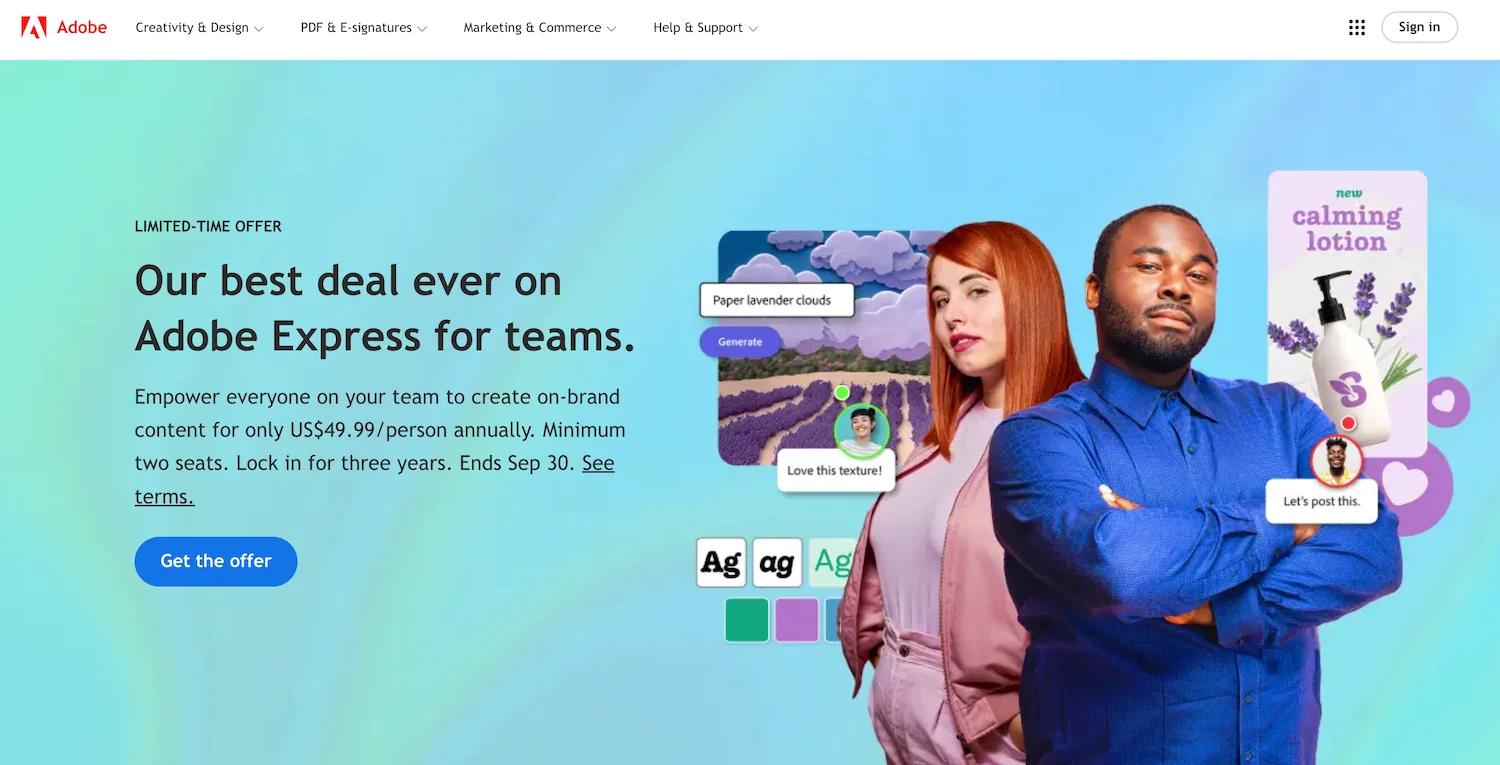
adobe
Adobe, now worth $237 billion, has seamlessly integrated its various software and cloud-based products under a unified online presence, making it easy for users to navigate and access the solutions they need.
Through consolidating its diverse offerings, Adobe has created a cohesive digital experience that strengthens its brand identity and streamlines customer interactions.
2. Intuit

intuit website
Intuit, the financial software company, has also effectively managed its portfolio of brands, including TurboTax and Mint, through a cohesive multi-brand website.
Intuit's approach allows users to easily discover and engage with the company's diverse range of financial management tools, fostering a consistent brand experience across its digital touchpoints.
3. GM (General Motors)
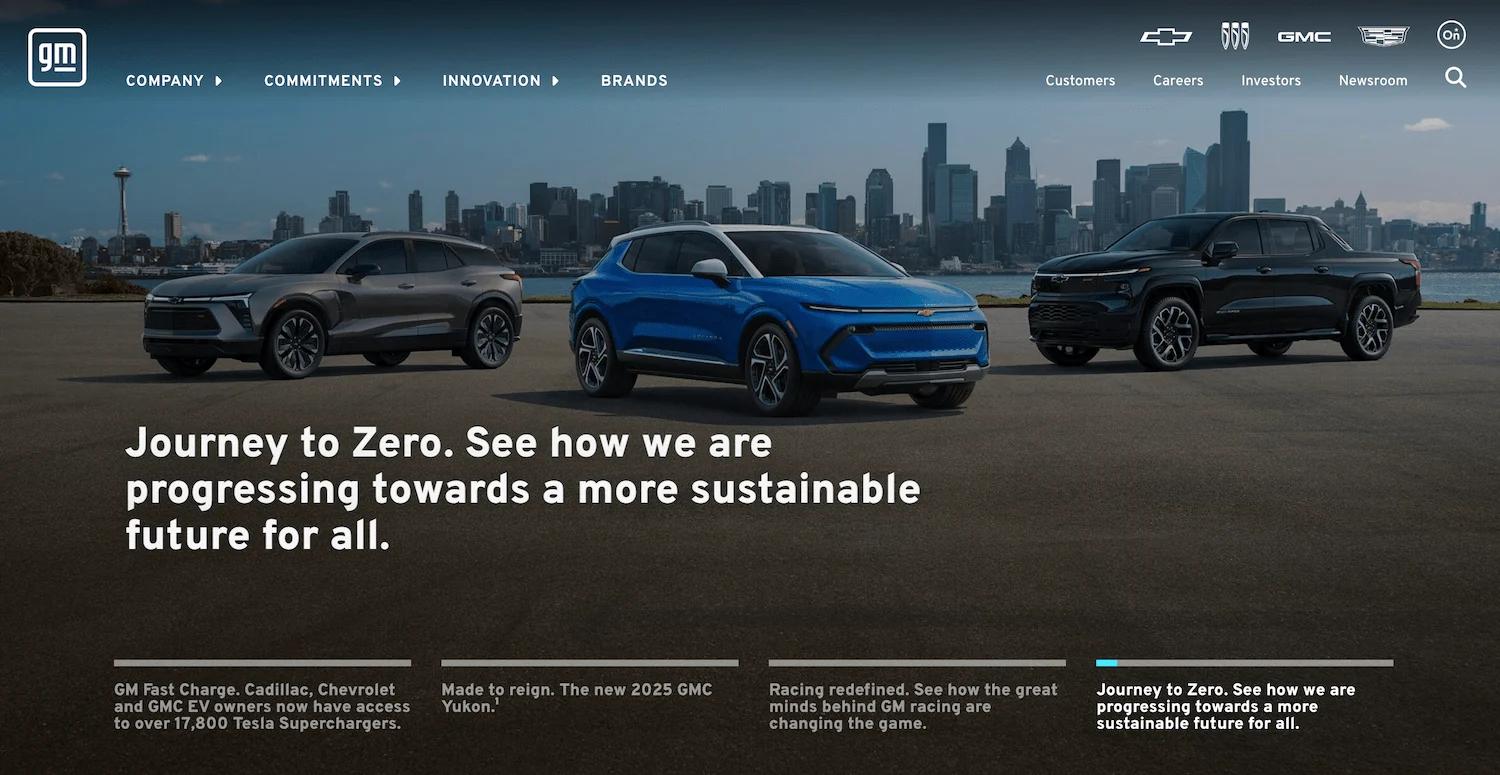
gm website
General Motors (GM) has used its multi-brand website to highlight its diverse automotive brands, such as Chevrolet, Buick, and Cadillac, while maintaining a consistent brand identity.
GM's online presence showcases the unique features and attributes of each brand, allowing customers to explore and compare the options that best fit their needs.
4. Oracle

oracle website
Oracle, the tech giant, has effectively navigated the challenges of a multi-brand digital presence. The company's website seamlessly integrates its enterprise software solutions, cloud services, and industry-specific offerings, providing a centralized hub for customers to discover and engage with the full breadth of Oracle's product portfolio.
5. Marriott
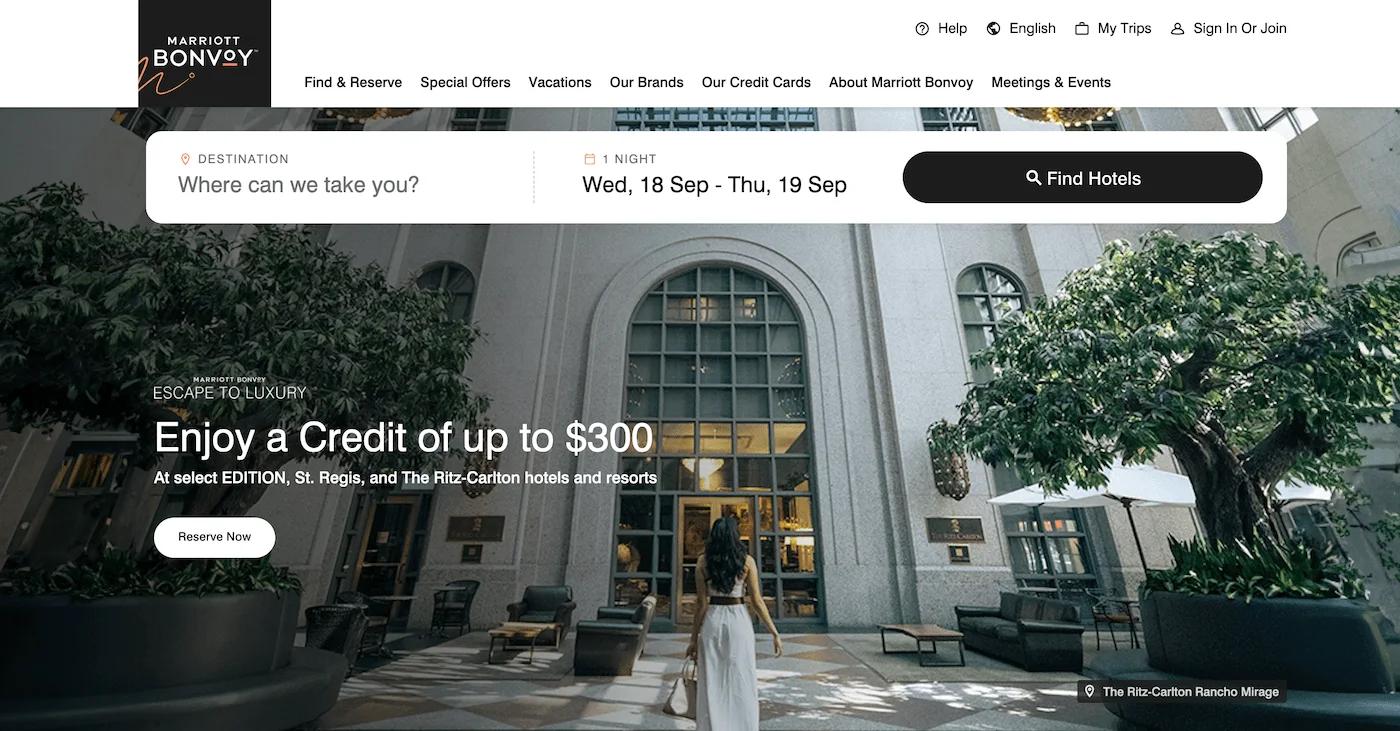
marriot website
Marriott, the global hospitality brand, has also demonstrated excellence in managing a multi-brand website. The company's online presence showcases its diverse hotel brands, including Marriott, Ritz-Carlton, and Courtyard, while maintaining a consistent visual identity and user experience across its digital touchpoints.
This approach helps Marriott effectively cater to the diverse preferences and needs of its customers.
These examples highlight the potential of multi-brand website management, offering inspiration and insights for organizations looking to enhance their online portfolio management, digital presence, and user experience.
6. Microsoft
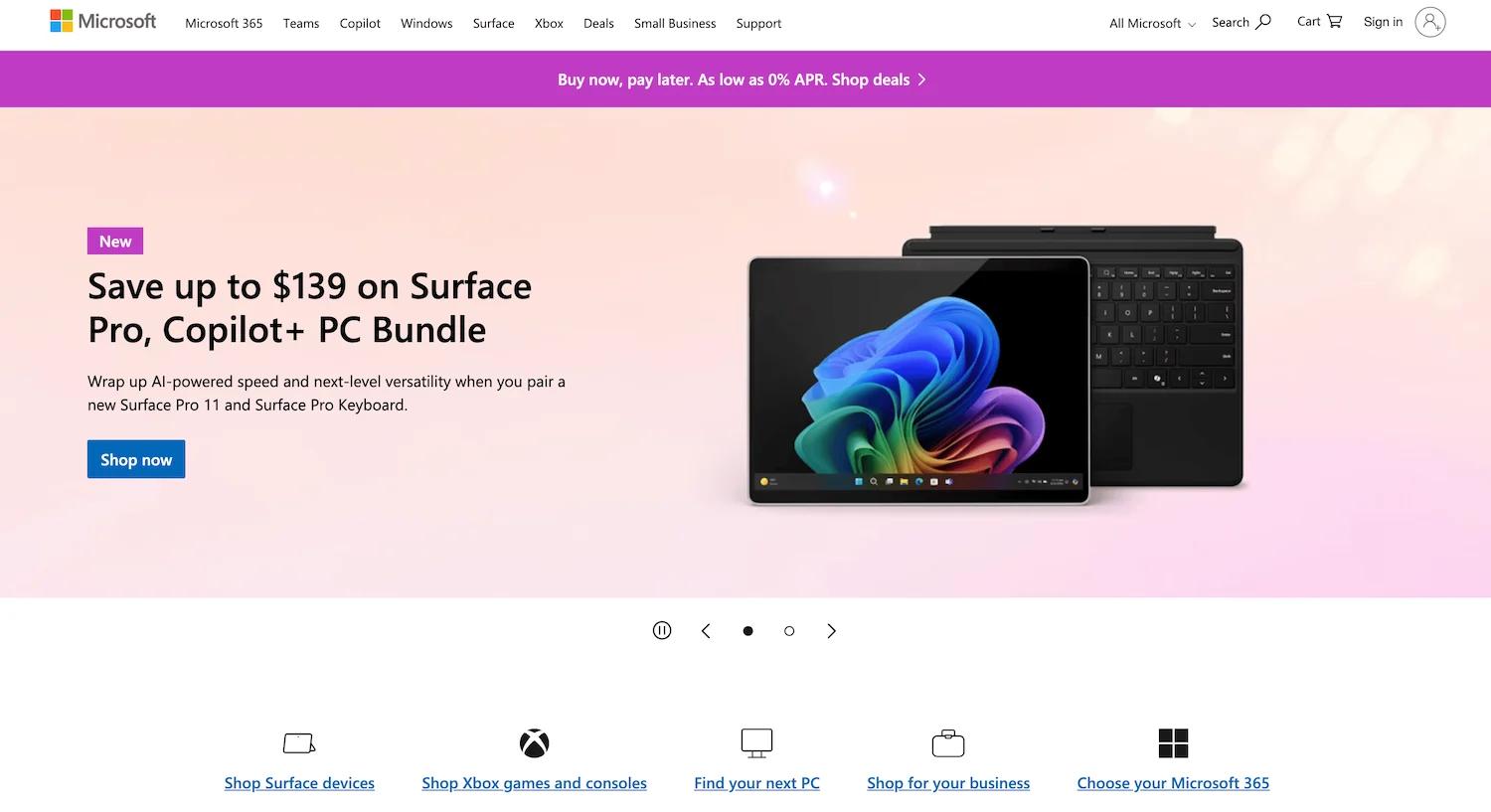
microsoft homepage
Microsoft manages a diverse ecosystem of products, from Windows and Office to Xbox, by presenting them through a streamlined multi-brand website. This approach allows users to navigate their vast offerings easily, accessing tailored resources for their specific needs. By continuously analyzing user interactions, Microsoft refines its digital strategy to stay ahead of consumer expectations, illustrating how effective multi-brand management can drive innovation and accessibility in technology.
7. L'Oreal
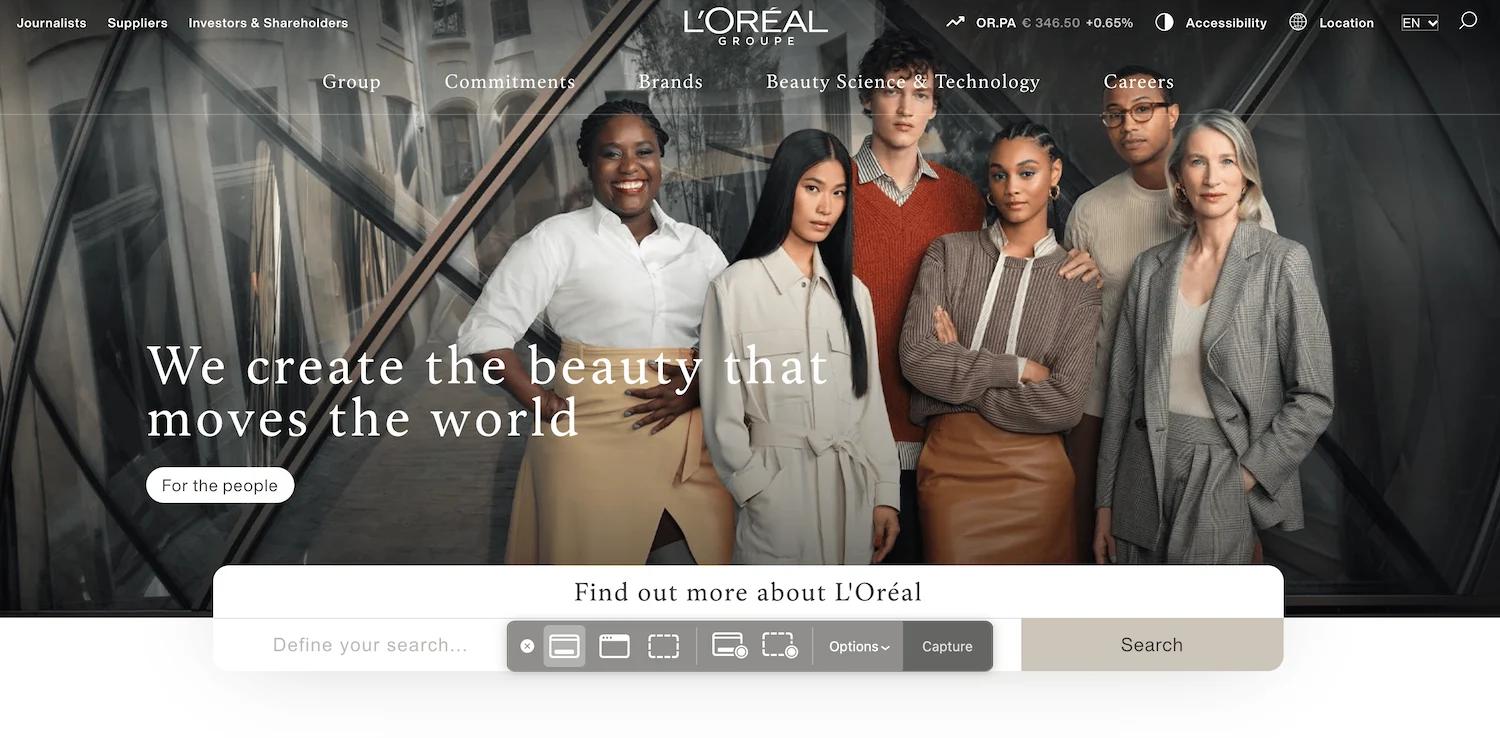
loreal homepage
L'Oréal brings together a rich collection of beauty brands like Lancôme and Garnier, effectively addressing the varied needs of consumers. Their multi-brand website creates a seamless experience that showcases each brand's identity while offering personalized product recommendations. L'Oréal’s commitment to sustainability is woven throughout its digital presence, appealing to consumers who prioritize ethical choices in beauty.
8. Electronic Arts (EA)
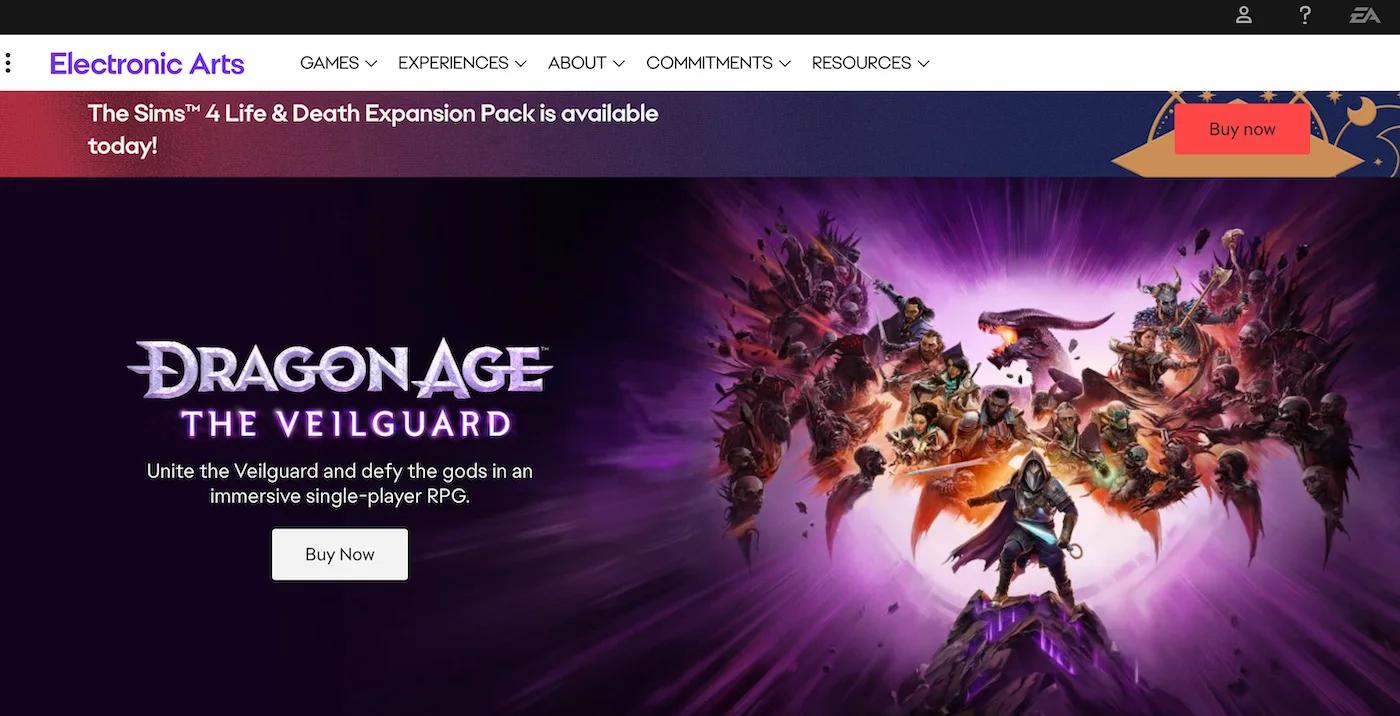
ea homepage
Electronic Arts (EA) excels in the competitive gaming landscape with a diverse portfolio of brands, including FIFA, Madden NFL, and The Sims. Their multi-brand website effectively showcases each franchise's unique identity, catering to various gaming preferences and communities. EA fosters engagement through personalized experiences, offering tailored content, game recommendations, and community-driven events that resonate with gamers. By leveraging data analytics to understand player behavior, EA continuously optimizes its digital presence, ensuring a dynamic and immersive experience that keeps fans connected to their favorite titles while attracting new audiences.
9.URBN

urbn homepage
URBN taps into contemporary culture through its vibrant portfolio of lifestyle brands, including Urban Outfitters and Free People. The company’s multi-brand website fosters a sense of community, inviting consumers to explore fashion and home decor through engaging, user-generated content. URBN embraces social commerce, encouraging shoppers to connect with influencers and their peers, enhancing the online experience with authenticity and relevance.
10. Kering
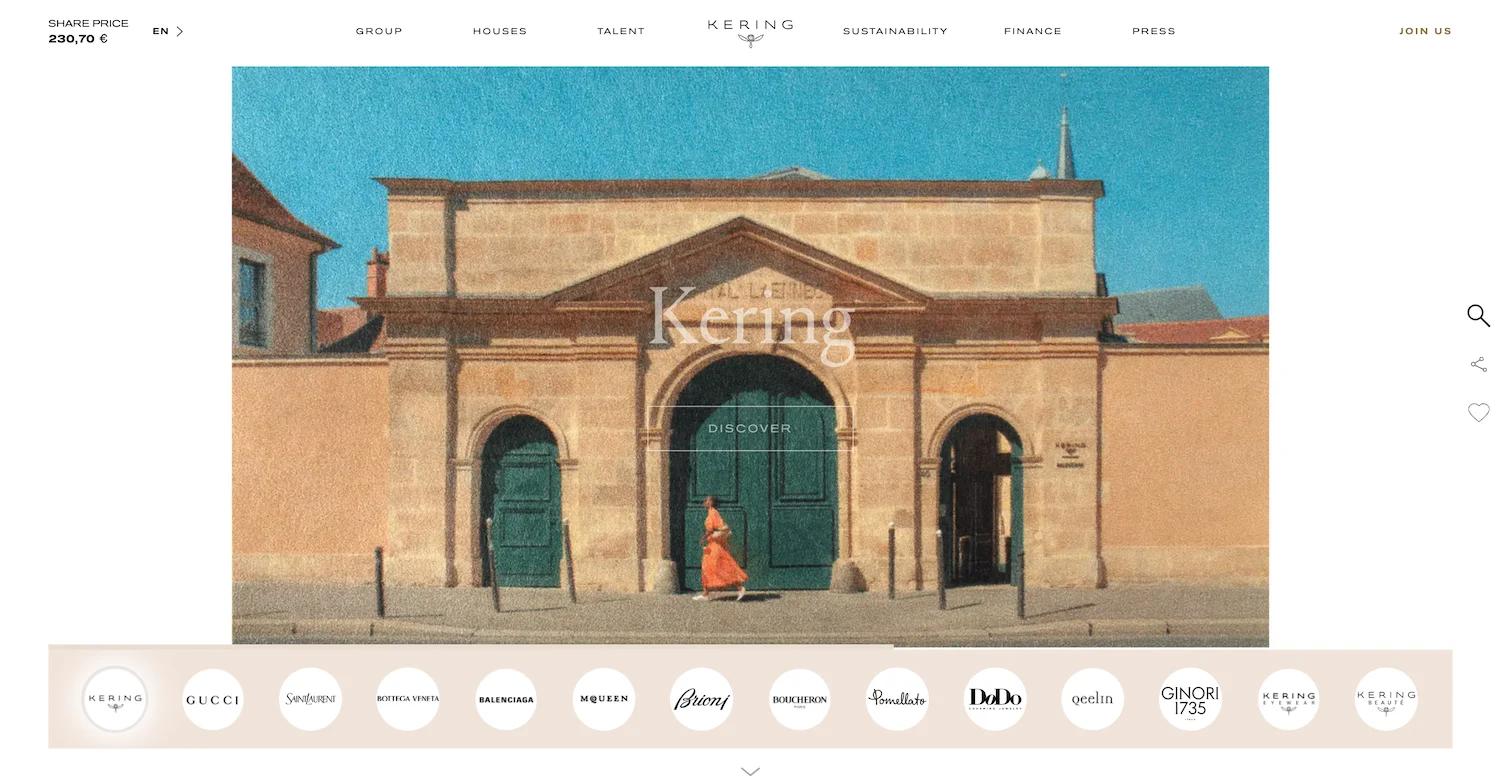
kering homepage
Kering navigates the luxury market with finesse, managing prestigious brands such as Gucci and Bottega Veneta under a unified digital strategy. Their multi-brand website emphasizes storytelling and heritage, allowing each brand to shine while maintaining a cohesive luxury experience. By promoting transparency in sourcing and production, Kering engages consumers who value ethical luxury, reinforcing the idea that style and responsibility can coexist.

Conclusion
Effectively managing a multi-brand website is a complex yet rewarding endeavor that can significantly benefit your business. Using strategies like centralized content management system (CMS) administration, unified content planning, consistent design elements, and optimized search engine optimization (SEO) can create a seamless and engaging user experience across your brand portfolio.
Here at Webstacks, we help many leaders in tech level up their online presence through next-gen solutions for B2B websites. Join our growing community of B2B experts and learn the ins and outs of building a website through our headless CMS implementation checklist.




